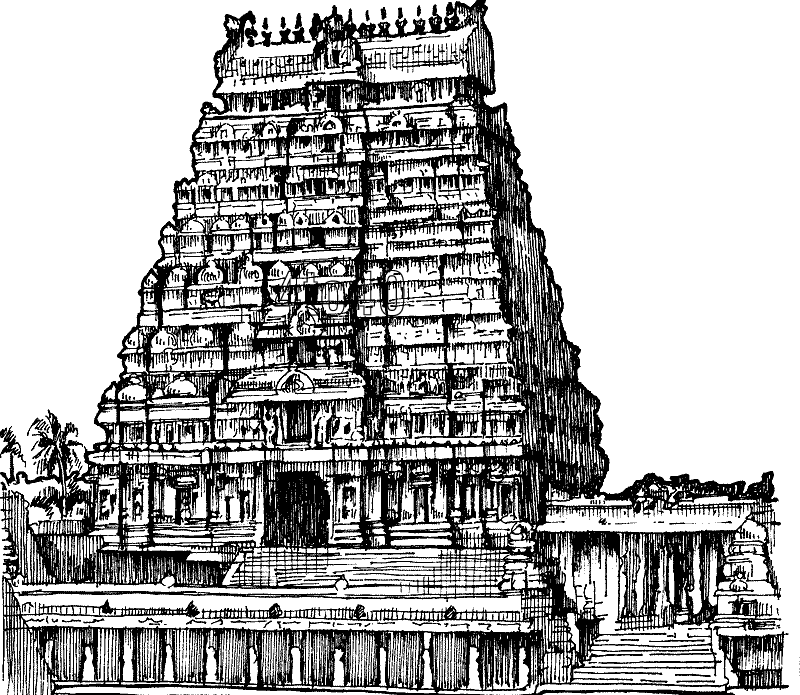LALITHA SAHASRANAMA
सर्वशक्तिमयी सर्व-मङ्गला सद्गतिप्रदा ।सर्वेश्वरी सर्वमयी सर्वमन्त्र-स्वरूपिणी ॥ ५२॥

52. Sarvashakti mayi sarva mangala sadgati prada Sarveshvari sarvamayi sarvamantra svarupini
सर्वशक्ति-मयी (199)
Sarvashakti-mayi (199)
Meaning:
Devi provides all the powers to the demi gods.

Interpretation:
The Namah consists of three words Sarva + Shakti + Mayi. Sarva, as we all are aware, means All. Shakti, as we all are aware, means Power. Mayi means 'to provide'. Thus the correct interpretation of the Namah is Devi provides all the powers.
To have a better understand the meaning of Mayi, let's refer to the following two slokas:

Quote from Medha Suktam:
Medha Suktam, which forms part of the Yajur Veda and which is a variation of the original Khila Suktam documented in the Rig Veda, a hymn addressing Devi Saraswati, contains:
मयि॑ मे॒धां मयि॑ प्र॒जां मय्य॒ग्निस्तेजो॑ दधातु॒ मयि॑ मे॒धां मयि॑ प्र॒जां मयीन्द्र॑ इन्द्रि॒यं द॑धातु॒ मयि॑ मे॒धां मयि॑ प्र॒जां मयि॒ सूर्यो॒ भ्राजो॑ दधातु ॥
In the above sloka one seeks various things such as intelligence, strength, progeny etc from Agni, Indra and Surya.
(The above mantra is also chanted by Brahmacharis while performing Samita-dhanam. )

Quote from Brahmacharini sloka:
(composed by Sri Ved Vyas, forming part of Devi Bhagavatam)
दधाना करपद्माभ्यामक्षमाला कमण्डलू
देवी प्रसीदतु मयि ब्रह्मचारिण्यनुत्तमा ॥
I Worship Devi Brahmacharini) who holds the Akshmala and Kamandalu in her lotus like hands. O Devi ! shower your grace on me. You are incomparable.
From the above quotes, it will be clean that Mayi stands for the one who provides.

Shakti worship - the Ten Mahavidyas
The concept of Shakti worship has been popular from ancient times. According to the Tantrik school of Devi worship, the power of Devi (Shaki) is represented in her ten different forms of Mahavidyas. This possibly could be basis of the meaning of the Namah. The names of ten Mahavidyas are:sequence: Kali, Tara, Tripura Sundari, Bhuvaneshwari, Bhairavi, Chinnamadta, Dhumavati, Bagulamukhi, Matangi and Kamala.

The Shakti Peethas
Various legends explain how the Shakti Peethas came into existence. The most popular is based on the story of the death of the goddess Sati and various parts of her body chopped off by Lord Maha Vishnu, falling at various places. . The number of Shakti Peethas vary from, 51,52,64 and 108 out of which 18 are classified as Ashta-Dasha Peethas.
Author's Notes:
The term Shakti (denoting power of Devi - or Devi herself) finds mention in numerous texts.

In Devi Mahatmyam (Chandi Path) it is found atleast in the following two places:
या देवी सर्वभूतेषु शक्तिरूपेण संस्थिता । नमस्तस्यै नमस्तस्यै नमस्तस्यै नमो नमः
सृष्टिस्थितिविनाशानां शक्तिभूते सनातनि ।
गुणाश्रय गुणमये नारायणि नमोSस्तु ते ।
Adi Shankara, in his magnum opus composition Soundarya Lahari, makes a mention about Shiva and Shakti in the opening verse itself:
शिवः शक्त्या युक्तो यदि भवति शक्तः प्रभवितुं

Sri Ramakrishna Paramahamsa refers to Shaki as the female form of Brahman.
Disclaimer: All matters contained in this article are the property of www.templesofasia.com. The opinions expressed in this article are purely that of the author. The author alone is responsible for the accuracy, authenticity, completeness and validity of all the information in the article.


Comments